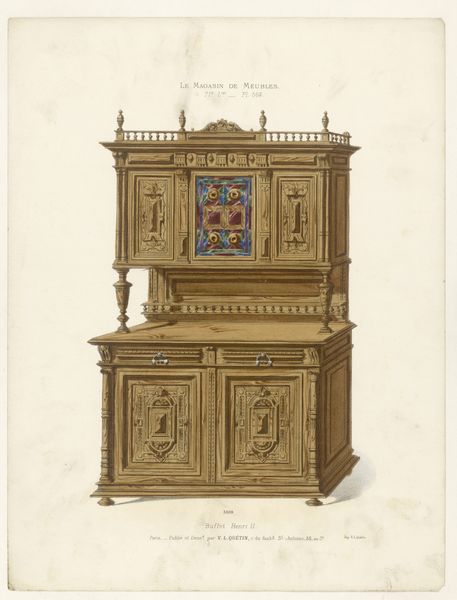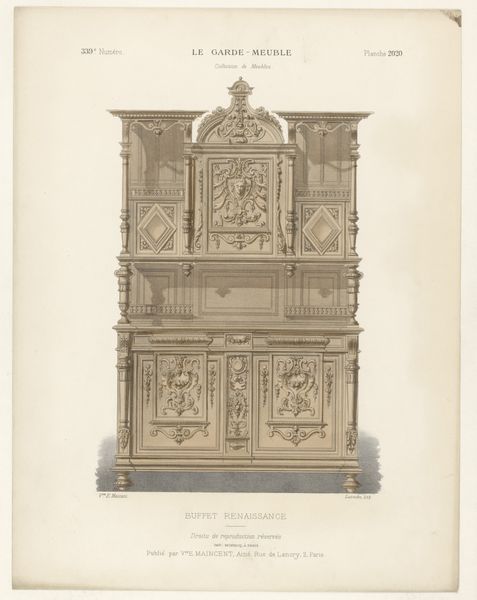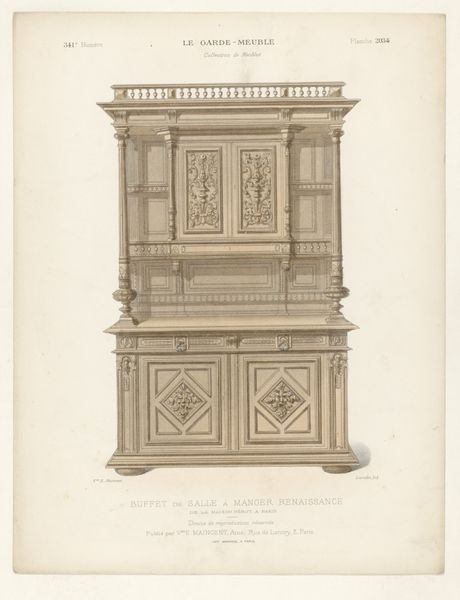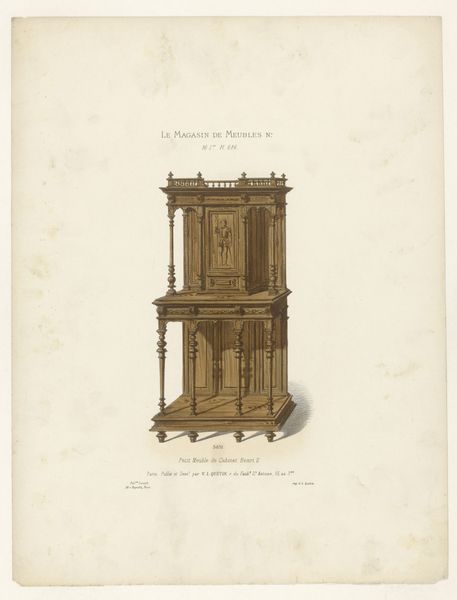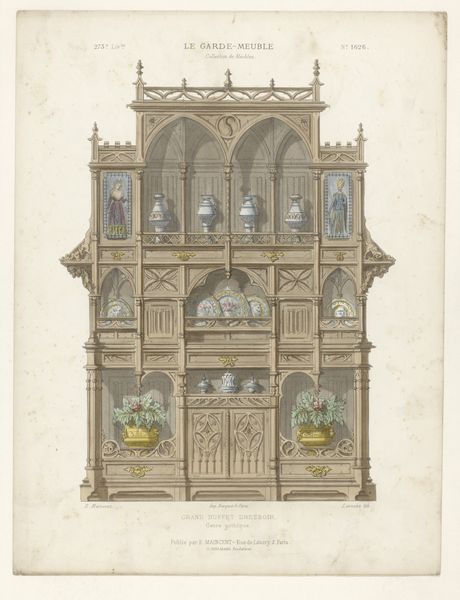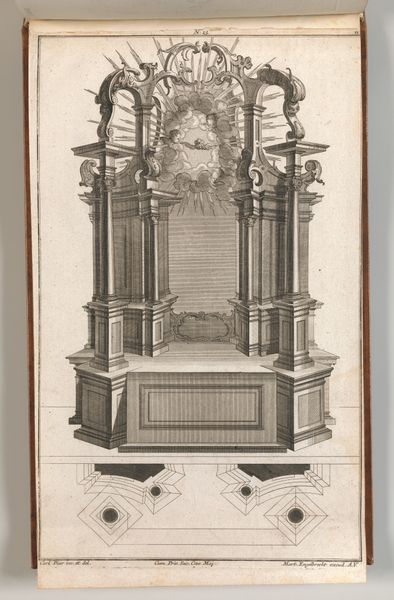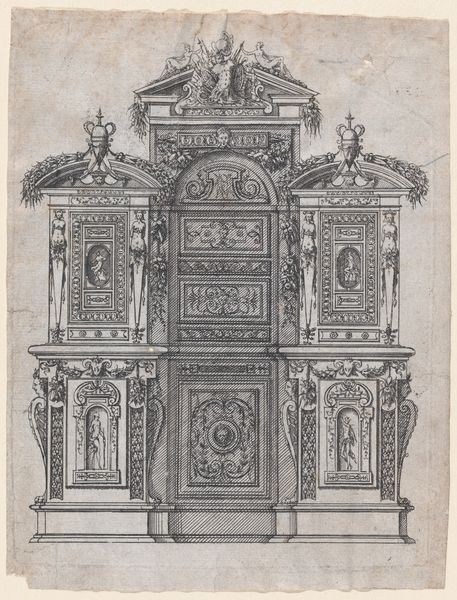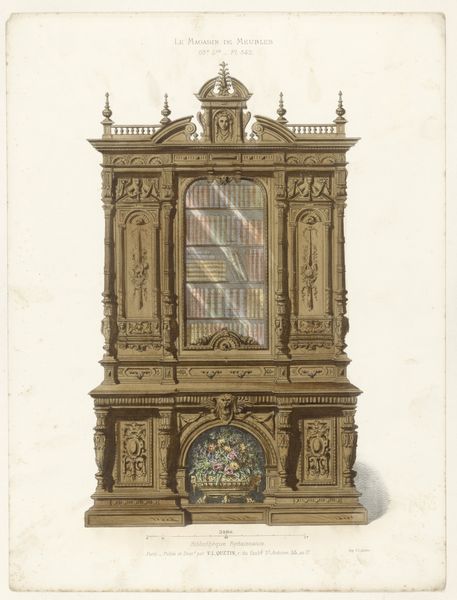
drawing, print, watercolor
#
drawing
# print
#
furniture
#
watercolor
#
watercolour illustration
#
decorative-art
#
watercolor
Dimensions: height 357 mm, width 275 mm
Copyright: Rijks Museum: Open Domain
Curator: Here we have a striking watercolor drawing titled "Buffetkast," believed to be crafted sometime after 1878. The artwork, rendered in print and watercolor, showcases a meticulously detailed piece of furniture. What strikes you about this piece initially? Editor: The intricacy, certainly. There’s an almost obsessive level of detail in the rendering of the wood grain and decorative carvings. It feels very symmetrical, a bit imposing, almost architectural. The use of watercolor gives it a softer, less severe edge though. Curator: I agree. When considering "Buffetkast", we should really look at how it represents design and production in the late 19th century. These decorative arts objects weren’t just about aesthetics, they also involved labor, the availability of materials, and the desires of the rising middle class. The craftsmanship tells a story of industry. Editor: Absolutely. Focusing on formal qualities, notice the geometric forms throughout, balanced with the organic flourishes in the carved details. The artist is clearly interested in juxtaposition—the rigidity of the structure versus the fluid application of the watercolors. And that central, stained-glass window... It punctuates the design with an element of controlled vibrancy. Curator: And if we contextualize the making of it with that central piece being potentially mass produced and made available for selection? That allows consumers to inject a degree of individuality into the industrially-produced object. It represents the blurring of lines between artisanal work and mass manufacture, of bespoke and made-to-order objects for newly established consumer groups. Editor: I can see that. From a purely visual perspective, the use of shadowing really works to create depth and volume and a feeling of opulence despite the constraints of the media involved. I suppose whether this was designed for the aspiring middle classes, the piece is a celebration of craft, labor and, well, consumerism. Curator: Well said. Examining "Buffetkast" reveals so much about the period's economic conditions and material culture as well as artistic practices. Editor: A piece that truly encourages multiple viewing points!
Comments
No comments
Be the first to comment and join the conversation on the ultimate creative platform.
